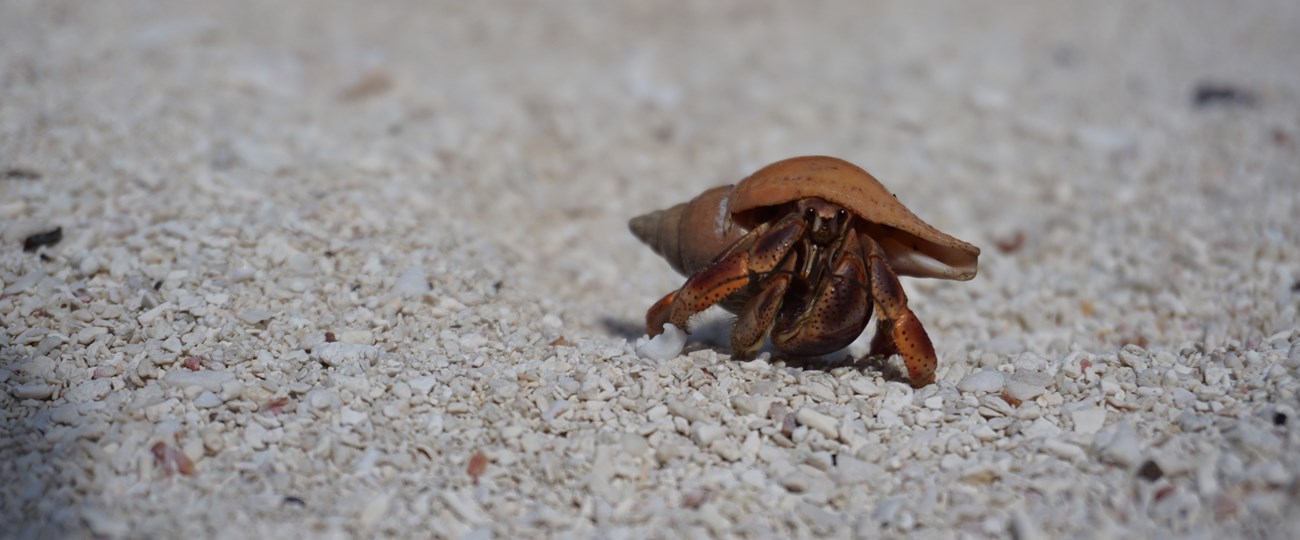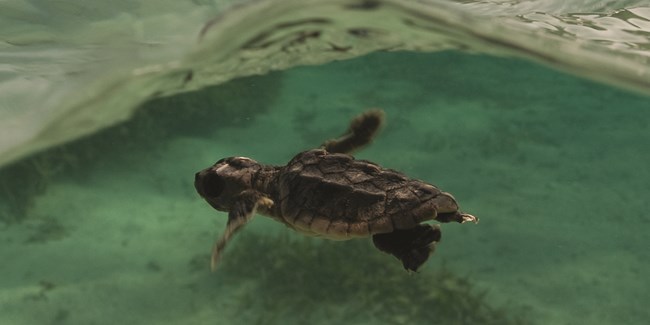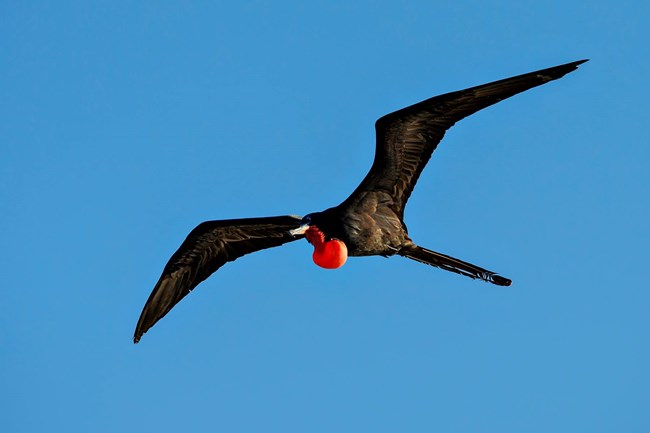Enjoying Wildlife at Dry TortugasThe Dry Tortugas has a diverse natural history and a variety of wildlife both above and under water. From birds, to sea turtles and coral reefs, the park is paradise for wildlife viewing. 
Things to Keep in Mind

NPS Photo Sea TurtlesThe Dry Tortugas was originally called “Las Tortugas”. This was the Spanish name given to these islands for the sea turtles commonly found swimming around the islands and nesting on the sandy beaches. Two common nesting sea turtles in the Dry Tortugas are the green and loggerhead species. While visiting Dry Tortugas National Park, if you are lucky enough to spot one of the 5 different sea turtles commonly found in the park, please remember to keep your distance. 
NPS Photo Reefs and FishesAncient coral reefs are the foundation of the Dry Tortugas islands, topped by a shallow basin ringed by living coral reefs. Hundreds of species of marine animals lie just below the surface of the water. There are opportunities to view sharks, sea turtles, coral, lobsters, squid, octopus, tropical reef fishes, and Goliath groupers. 
NPS Photo BirdsDry Tortugas National Park is a world class birding destination, especially during spring migration. Nearly 300 hundred species of birds have been spotted in the Dry Tortugas. Some species, like the magnificent frigatebird and sooty tern, nesting nowhere else in the continental United States, except for the islands of the Dry Tortugas. Imagine 100,000 sooty terns all coming home to roost on a tiny speck of land in the middle of the Gulf of America. Keep a lookout for pelagic seabirds on your journey out to the park as well. These seabirds spend almost their entire life over the open ocean. With a little luck, you may be able to spot such rarities as the elegant White-tailed Tropicbird. |
Last updated: February 24, 2025
